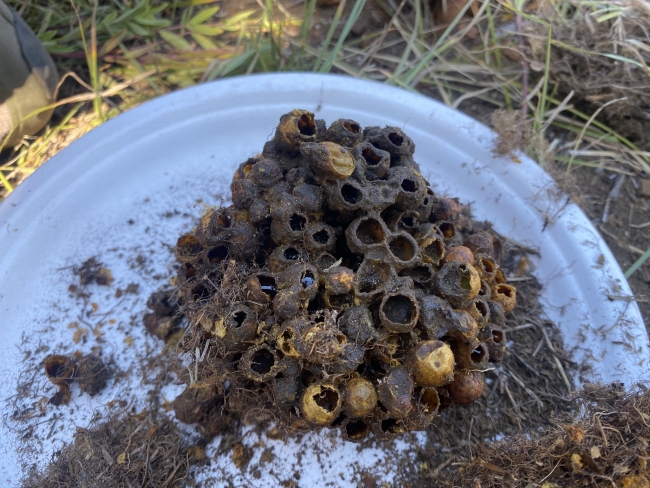Western Bumble Bee: Bombus occidenetalis

Five species of bumble bees, the genus Bombus, have been confirmed to be found in Los Alamos County. The Western Bumble Bee, Bombus occidentalis, was likely included on this list prior to 2000, but, according to iNaturalist observations, this species has not been observed since then.
Big-bodied Western Bumble Bees are typical of the genus, emerging in spring and continuing to visit a wide variety of flowers through late August. Their range is the Western states from Alaska to Arizona, including New Mexico. They are usually found in the mountains.
Queens can be found flying low and searching the ground for nesting sites in March. They often choose abandoned rodent burrows or hollow areas in bunchgrasses for a nest. Female workers are the first offspring the queen produces, and by mid-summer the colony might hold 100 females collecting pollen and nectar. In late summer, the queen produces males, who quickly mature and fly off to mate with queens in other colonies. All worker bees die off in the fall, and fertilized queens overwinter to emerge in the spring.
Once the most common bumblebee in its range, since 1998 Western Bumble Bee populations have been on a steady decline. Because some native plant species and some agricultural species are dependent on bumble bee populations, this notable decline has influenced production of native plants and crops, particularly in Washington and Oregon.

The rapid decline of the Western Bumble Bee is likely a result of disease. In the early 1990s, queens were shipped to European bee rearing facilities, and the resulting colonies shipped back to the United States for commercial pollination. Apparently, some of the colonies picked up a destructive bee virus of European origin. The North American bumble bees had no prior resistance to this pathogen. Colonies shipped back to the United States quickly spread the disease throughout North America, where the Western Bumblebee and five other closely related bumblebee species were affected. The status of the species is under review to determine if it should be listed as threatened or endangered.
How can you tell if you make a rare sighting of a Western Bumble Bee in your garden? They have a short yellow band immediately behind a black head, a black abdomen with a central yellow stripe (which is sometimes missing), and the abdomen is usually tipped with white hairs at the back. A photo posted on iNaturalist would be met with much enthusiasm. Keep watching!
Text by Craig Martin
Read about the excavation of the Western Bumble Bee nest pictured above.
